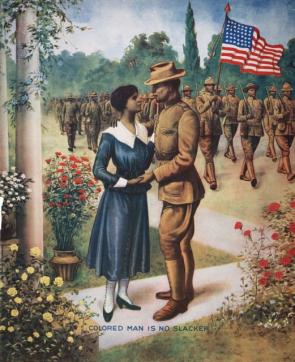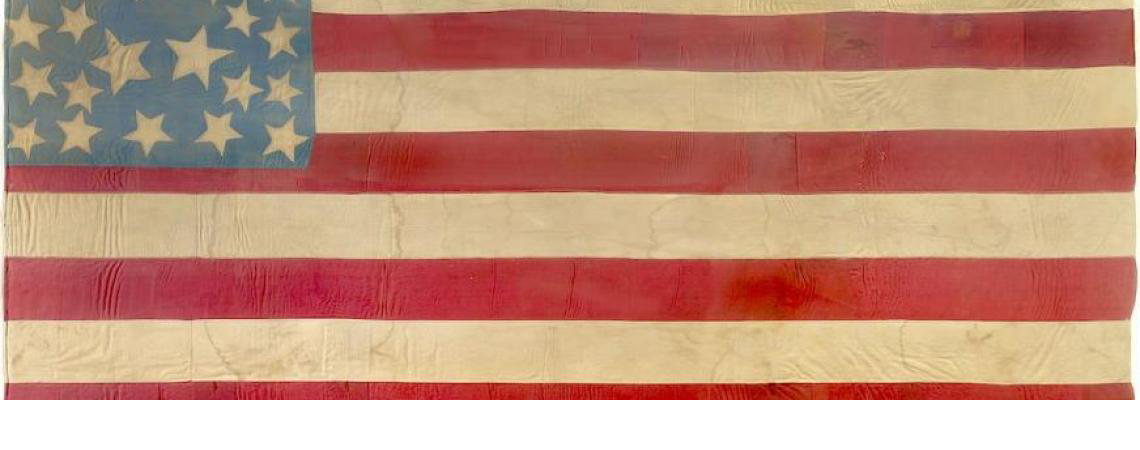From These Honored Dead: Memorial Day and Veterans Day in American History
by Kenneth T. Jackson

Four score and seven years ago our fathers brought forth on this continent, a new nation, conceived in Liberty and dedicated to the proposition that all men are created equal.
Now we are engaged in a great civil war, testing whether that nation or any nation so conceived and so dedicated can long endure. We have come to dedicate a portion of that field, as a final resting place for those who here gave their lives that the nation might live. It is altogether fitting and proper that we should do this.
But, in a larger sense, we cannot dedicate, we cannot consecrate, we cannot hallow this ground. The brave men, living and dead, who struggled here, have consecrated it far above our poor power to add or detract. The world will little note nor long remember what we say here, but it can never forget what they did here. It is for us, the living, rather to be dedicated here to the unfinished work which they who fought so nobly advanced. It is for us to be here dedicated to the great task remaining before us, that from these honored dead we take increased devotion to the cause for which they gave the last full measure of devotion; that we here highly resolve that these dead shall not have died in vain; that this nation, under God, shall have a new birth of freedom, and that government of the people, by the people, for the people shall not perish from the earth.
Abraham Lincoln
Gettysburg, Pennsylvania, 1863
No one, before or since, has spoken as eloquently as President Lincoln on the debt that a grateful nation owes to young men who lose their lives in battle while fighting under its flag. As the wartime leader promised, "from these honored dead we take increased devotion to the cause for which they gave the last full measure of devotion."
Gettysburg was no ordinary battle, and Lincoln’s address at the cemetery was no ordinary speech. But words alone, even those of a beloved and martyred president, were not enough, especially considering the tragic human cost of the Civil War. Approximately 370,000 Union soldiers died in the conflict; another 250,000 perished on the Confederate side. The carnage was particularly unbearable because the nation was as yet small and underpopulated. In fact, more Americans died in combat between 1861 and 1865 than in all other American wars before 1960. What could the United States do to recognize such sacrifice?
Memorial Day
Decoration Day, later designated Memorial Day, began on May 5, 1866, when the small town of Waterloo in Seneca County, New York, organized an entire day of remembrance for its lost sons. The idea caught on, and exactly two years later, on May 5, 1868, Major General John A. Logan, commander in chief of the Grand Army of the Republic, the organization of Union Army veterans, issued General Order No. 11, designating May 30, 1868, "for the purpose of strewing with flowers or otherwise decorating the graves of comrades who died in defense of their country." Logan added that he inaugurated the observance "with the hope that it will be kept up from year to year, while a survivor of the war remains to honor the memory of his departed comrades."
By 1890, all of the Northern states recognized May 30 as a special day to remember their fallen heroes. In the nineteenth century, however, most Southern states refused to go along with the holiday, preferring instead to have their own special day to honor Confederate war dead—January 19 in Texas; April 26 in Alabama, Florida, Georgia, and Mississippi; May 10 in South Carolina; and June 3 in Louisiana and Tennessee. After World War I, however, virtually the entire United States accepted Memorial Day (later designated as the last Monday in May) as the primary occasion to remember all those who had died in battle.
Veterans Day
Armistice Day, later to be called Veterans Day, had a different origin and a different purpose than Memorial Day. Between 1914 and 1918, Europe was awash in blood, as a titanic struggle consumed most of the continent and spilled over to Africa and Asia. The resulting trench warfare and the persistent suicidal charges into "no-man’s land" ultimately took the lives of more than ten million men. Known variously as the Great War or the War to End All Wars, it ended in 1918, at the eleventh hour of the eleventh day of the eleventh month. Exactly one year later, on November 11, 1919, President Woodrow Wilson proclaimed the first Armistice Day by asking Americans to "be filled with solemn pride in the heroism of those who died in the country’s service." His idea was that all activity and business throughout the United States would stop for two minutes, beginning at exactly 11 a.m.
Armistice Day grew in importance in 1920, and not because of anything that happened in the United States. Rather, people in both Great Britain and France used the occasion of the second anniversary of the cease-fire to recognize in an imaginative way the many hundreds of thousands of their countrymen who perished in four years of machine-gun and heavy artillery fire. Each nation went to enormous effort and expense to collect an "unknown soldier" from every important battlefield of the war. From those choices, an ordinary soldier selected one corpse for the entire nation to honor. Because no one could know whose body was in the coffin, every bereaved parent or spouse or child could imagine that it was his or her husband or son or father who occupied the coffin and was the focus of unprecedented attention. In London, on November 11, 1920, King George V, accompanied by his field marshals, admirals, and senior ministers, walked slowly and respectfully behind a flag-draped, horse-drawn casket toward Westminster Abbey. There, amid all the pageantry and ceremony that the British Empire could muster, "a soldier of the Great War, known but to God," was buried among the kings with full military honors and posthumously awarded the nation’s highest decoration for valor, the Victoria Cross. Meanwhile, in Paris at exactly the same time, a French unknown soldier was buried in that nation’s highest place of honor, the Arc de Triomphe. A perpetual flame was lit, as all of France paused, and wept.
Inspired by those examples, the United States designated its unknown soldier in 1921. The process was complex. First, officials disinterred four unidentified bodies from American cemeteries at Belleau Wood, Romagne, Bony, and Thiaucourt. Then, in Chalons, France, Sergeant Edward F. Younger of the United States 59th Infantry chose from among the four caskets by walking around them three times before finally placing a bouquet of white roses on the second one. After saluting the coffin he reported that he had completed his mission. A waiting American warship, USS Olympia, then brought the body home to Washington, where it lay in state for three days in the rotunda of the Capitol and was posthumously awarded the nation’s most coveted award for valor, the Congressional Medal of Honor. On November 11, 1921, at precisely 11 a.m., the casket was lowered into a special white marble tomb in Arlington National Cemetery beneath this inscription: "Here Rests In Honored Glory an American Soldier Known but to God." The memorial is now designated as the Tomb of the Unknowns, and it includes unidentified Americans from both World War II and the Korean War.
Congress officially designated November 11 as Armistice Day in 1926 and made it a national holiday in 1938. It would likely still be known as Armistice Day except that World War II put more than sixteen million Americans in uniform. Thereafter, a holiday honoring veterans only from the 1917–1918 period seemed unnecessarily restrictive. So in 1954, Congressman Edwin K. Rees of Kansas proposed that November 11 honor all veterans, and not just those who had served in World War I. President Dwight D. Eisenhower promptly signed the legislation, and Armistice Day became Veterans Day that same year.
Although Americans often forget whom or what we honor on Memorial Day and on Veterans Day, general usage now is that Memorial Day recognizes those who have died in their country’s service, while Veterans Day recognizes everyone who has worn the uniform of his or her country.
In the end, holidays and monuments are unable to capture the enormity of even a single life taken before its time. Instead, words, whether from Abraham Lincoln’s "Gettysburg Address," or John McCrae’s "In Flanders Fields," or Rupert Brooke’s "The Soldier," remain the best memorials. In essence, these different expressions of sentiment all boil down to what is said in Laurence Binyon’s "For the Fallen," which was written in September 1914:
They shall not grow old, as we that are left grow old:
Age shall not weary them, nor the years condemn.
At the going down of the sun and in the morning
We will remember them.
Kenneth T. Jackson is Jacques Barzun Professor of History and the Social Sciences and the director of the Herbert H. Lehman Center for American History at Columbia University. His publications include Crabgrass Frontier: The Suburbanization of the United States (1987), which received the Bancroft Prize and the Francis Parkman Prize, and Silent Cities: The Evolution of the American Cemetery (1996).



